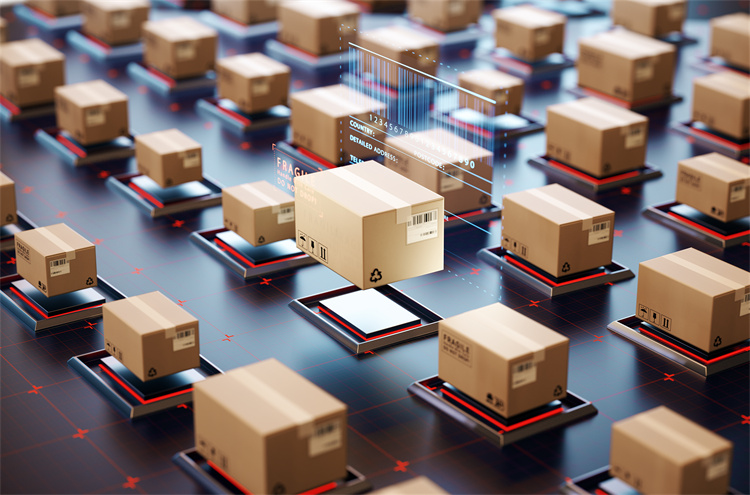Emerging Trends in High-Tech Supply Chain Strategies

High-tech plays a crucial role in modern supply chains, transforming how businesses operate. The rapid evolution of technology, including advancements in artificial intelligence and machine learning, has significantly impacted global markets. Companies now streamline operations and gain better oversight, leading to improved efficiency and competitiveness. As the landscape continues to change, businesses must strategically adapt to these innovations. Embracing a high tech supply chain strategy is essential for maintaining agility and flexibility, ensuring that organizations remain at the forefront of their industries.
Key Components of High-Tech Supply Chains

Integration of AI and Machine Learning
Artificial Intelligence (AI) and Machine Learning (ML) have become essential in modern supply chains. They enhance efficiency and decision-making processes.
Predictive Analytics
Predictive analytics uses AI to forecast demand and optimize inventory. Companies like Maersk and IBM have implemented AI for predictive supply chain optimization. This approach helps businesses anticipate market changes and adjust their strategies accordingly.
Automation in Decision-Making
AI-driven automation streamlines operations by reducing manual intervention. It enables faster and more accurate decision-making, leading to cost savings and improved productivity. High tech supply chain strategy relies heavily on these technologies to maintain competitiveness.
Internet of Things (IoT) Applications
The Internet of Things (IoT) connects devices and systems, providing real-time data and insights.
Real-Time Tracking
IoT sensors offer real-time tracking of goods, enhancing visibility across the supply chain. This capability allows companies to monitor shipments and respond swiftly to disruptions, ensuring timely deliveries.
Enhanced Connectivity
Enhanced connectivity through IoT fosters seamless communication between different supply chain components. It supports a high tech supply chain strategy by enabling better coordination and collaboration among stakeholders.
Blockchain Technology
Blockchain technology introduces transparency and security to supply chains, building trust among participants.
Transparency and Security
Blockchain ensures that all parties have access to reliable information. For example, IBM Food Trust uses blockchain to increase transparency in food supply chains. This technology reduces fraud and enhances accountability.
Smart Contracts
Smart contracts automate transactions and enforce agreements without intermediaries. They streamline processes and reduce errors, making them a vital part of a high tech supply chain strategy.
Challenges in Implementing High-Tech Supply Chain Strategies
High tech supply chain strategy offers numerous benefits, yet it also presents significant challenges. Companies must navigate these obstacles to fully leverage technological advancements.
Data Privacy Concerns
Data privacy remains a critical issue in high tech supply chain strategy. Companies handle vast amounts of sensitive information, making regulatory compliance essential.
Regulatory Compliance
Organizations must adhere to stringent regulations like GDPR and CCPA. These laws protect consumer data and impose strict guidelines on data handling. Failure to comply can result in severe penalties, affecting both reputation and finances.
Consumer Trust Issues
Building consumer trust is vital. Customers demand transparency about how their data is used. Companies must implement robust security measures to reassure consumers and maintain loyalty.
Technological Infrastructure
Implementing a high tech supply chain strategy requires a solid technological foundation. This involves addressing both cost implications and integration challenges.
Cost Implications
Investing in advanced technologies can be expensive. Companies must allocate resources wisely to ensure a return on investment. Balancing costs with potential benefits is crucial for sustainable growth.
Integration with Legacy Systems
Many organizations struggle with integrating new technologies into existing systems. Legacy systems often lack compatibility with modern solutions. Companies need strategic planning to ensure seamless integration and avoid disruptions.
Workforce Adaptation
A successful high tech supply chain strategy depends on an adaptable workforce. Employees must develop new skills and embrace change.
Skill Development
Training programs are essential for equipping employees with the necessary skills. Companies should invest in continuous learning to keep pace with technological advancements.
Change Management
Managing change effectively is crucial. Organizations must foster a culture that embraces innovation. Clear communication and support can ease transitions and enhance employee engagement.
An industry expert noted, "I see developments in supply chain and freight visibility, and I depended on top line insights from predictive analytics tools during COVID." This highlights the importance of adapting to new tools and technologies.
By addressing these challenges, companies can optimize their high tech supply chain strategy, ensuring resilience and competitiveness in a rapidly evolving market.
Solutions and Future Directions in High-Tech Supply Chain Strategy

High tech supply chain strategy continues to evolve, offering innovative solutions and future directions for businesses. Companies must embrace these advancements to remain competitive and resilient.
Strategic Partnerships
Strategic partnerships play a crucial role in enhancing supply chain capabilities.
Collaborations with Tech Firms
Collaborating with tech firms allows companies to integrate cutting-edge technologies into their supply chains. These partnerships provide access to expertise and resources that drive innovation. By working closely with technology leaders, businesses can implement solutions that enhance efficiency and responsiveness.
Joint Ventures
Joint ventures offer another avenue for growth. Companies can pool resources and share risks, leading to the development of new products and services. This approach fosters innovation and enables businesses to explore new markets and opportunities.
Investment in Innovation
Investment in innovation is essential for maintaining a competitive edge in high tech supply chain strategy.
R&D Initiatives
Research and development (R&D) initiatives drive technological advancements. Companies investing in R&D can develop unique solutions tailored to their specific needs. This focus on innovation ensures that businesses stay ahead of industry trends and meet evolving customer demands.
Government Incentives
Government incentives support technological growth by providing financial assistance and tax benefits. These incentives encourage companies to invest in new technologies and infrastructure. By leveraging government support, businesses can reduce costs and accelerate the adoption of high tech supply chain strategies.
Sustainable Practices
Sustainability has become a key consideration in modern supply chains.
Eco-Friendly Technologies
Eco-friendly technologies reduce environmental impact and promote sustainability. Companies adopting green technologies can improve their brand image and meet regulatory requirements. This commitment to sustainability aligns with consumer expectations and enhances long-term viability.
Circular Supply Chains
Circular supply chains focus on resource efficiency and waste reduction. By implementing circular practices, companies can minimize waste and maximize resource utilization. This approach not only benefits the environment but also reduces costs and improves supply chain resilience.
Expert Testimony: An expert in supply chain management noted, "Technology is going to be one of the single biggest assets Supply Chain leaders will have in building resilience." This highlights the importance of integrating technological advances to create value for both teams and customers.
High tech supply chain strategy requires continuous adaptation and innovation. By embracing strategic partnerships, investing in innovation, and adopting sustainable practices, companies can ensure their supply chains remain robust and competitive in an ever-changing landscape.
Embracing high-tech strategies in supply chain management is crucial for modern businesses. These strategies offer significant competitive advantages by enhancing efficiency and adaptability. Companies that leverage technology, such as AI and data analytics, position themselves to thrive in the future. High-tech solutions provide the agility and flexibility needed to optimize supply chain assets effectively. To maintain a competitive edge, businesses must commit to continuous innovation and adaptation. By doing so, they ensure their supply chains remain robust and resilient in an ever-evolving market landscape.
See Also
Guiding Transformation: Embracing Technology in Supply Chain Solutions
Efficient Strategies for Advanced Manufacturing Supply Chain Challenges
Improving Logistics with Cloud-Based Technology Solutions
Discovering Robotics: Transforming the Supply Chain Landscape
